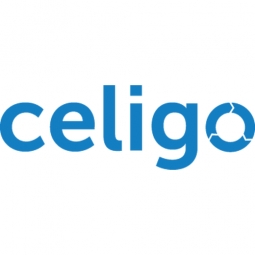下载PDF
E Source Boosts Invoicing Speed by 300% through Real-Time Data Synchronization
技术
- 应用基础设施与中间件 - 数据交换与集成
- 应用基础设施与中间件 - 中间件、SDK 和库
适用行业
- 金融与保险
- 公用事业
适用功能
- 采购
- 销售与市场营销
用例
- 智能包装
- 实时定位系统 (RTLS)
服务
- 系统集成
挑战
E Source是一家公用事业领域的研究和咨询公司,由于其快速增长而面临着巨大的挑战。该公司的销售额逐年以两位数的速度增长,而其现有的会计软件无法跟上这种增长。该软件经常出现系统故障,需要技术支持团队花费数小时进行故障排除。此外,报价、订单、客户和产品信息等关键数据必须在会计和 Salesforce 系统之间手动同步。该公司需要一个新的会计系统,该系统可以随着其发展而扩展,并消除手动数据同步的需要。然而,在新系统、NetSuite 和 Salesforce 之间找到可靠的集成且不需要更改现有销售流程是一项挑战。
关于客户
E Source 是一家私营研究和咨询公司,成立于 1986 年。该公司专注于公用事业及其客户。 E Source 协助电力和天然气公用事业公司解决涉及能源效率、项目设计、客户体验、营销和通信以及分布式能源战略的关键问题。在过去的几年里,该公司的销售额逐年增长两位数,因此需要更强大和可扩展的会计系统。
解决方案
E Source 选择 Celigo Salesforce – NetSuite Integration App 作为其集成解决方案。该应用程序提供关键 Salesforce 对象(包括机会、客户、联系人和产品)与 NetSuite 对象(如销售订单、公司、联系人和项目)的实时数据同步。这使得订单处理和客户计费更快,这对于处理以前需要耗时的手动工作的紧急订单尤其有价值。 Salesforce 和 NetSuite 之间的预构建集成还满足了其他几个 E Source 需求。集成应用程序配置为仅在机会状态变为“已关闭”时将客户和订单数据导入 NetSuite。集成应用程序还可以轻松地在 NetSuite 或 Salesforce 中映射或添加自定义字段。该应用程序的实施进展顺利,没有受到已与 Salesforce 集成的其他应用程序的干扰。
运营影响
数量效益
相关案例.

Case Study
IoT Solutions for Smart City | Internet of Things Case Study
There were several challenges faced: It is challenging to build an appliance that can withstand a wide range of voltage fluctuations from as low at 90v to as high as 320v. Since the device would be installed in remote locations, its resilience was of paramount importance. The device would have to deal with poor network coverage and have the ability to store and re-transmit data if networks were not available, which is often the case in rural India. The device could store up to 30 days of data.

Case Study
Automation of the Oguz-Gabala-Baku water pipeline, Azerbaijan
The Oguz-Gabala-Baku water pipeline project dates back to plans from the 1970’s. Baku’s growth was historically driven by the booming oil industry and required the import of drinking water from outside of the city. Before the construction of the pipeline, some 60 percent of the city’s households received water for only a few hours daily. After completion of the project, 75 percent of the two million Baku residents are now served around the clock with potable water, based on World Health Organization (WHO) standards. The 262-kilometer pipeline requires no pumping station, but uses the altitude differences between the Caucasian mountains and the capital to supply 432,000 m³/d to the Ceyranbatan water reservoir. To the people of Baku, the pipeline is “the most important project not only in 2010, but of the last 20 years.”

Case Study
GPRS Mobile Network for Smart Metering
Around the world, the electricity supply industry is turning to ‘smart’ meters to lower costs, reduce emissions and improve the management of customer supplies. Smart meters collect detailed consumption information and using this feedback consumers can better understand their energy usage which in turn enables them to modify their consumption to save money and help to cut carbon emissions. A smart meter can be defined in many ways, but generally includes an element of two-way communication between the household meter and the utility provider to efficiently collect detailed energy usage data. Some implementations include consumer feedback beyond the energy bill to include online web data, SMS text messages or an information display in consumers’ premises. Providing a cost-effective, reliable communications mechanism is one of the most challenging aspects of a smart meter implementation. In New Zealand, the utilities have embraced smart metering and designed cost effective ways for it to be implemented. The New Zealand government has encouraged such a move to smart metering by ensuring the energy legislation is consistent with the delivery of benefits to the consumer while allowing innovation in this area. On the ground, AMS is a leader in the deployment of smart metering and associated services. Several of New Zealand’s energy retailers were looking for smart metering services for their residential and small business customers which will eventually account for over 500,000 meters when the multi-year national deployment program is concluded. To respond to these requirements, AMS needed to put together a solution that included data communications between each meter and the central data collection point and the solution proposed by Vodafone satisfied that requirement.

Case Study
NB-IoT connected smart meters to improve gas metering in Shenzhen
Shenzhen Gas has a large fleet of existing gas meters, which are installed in a variety of hard to reach locations, such as indoors and underground, meaning that existing communications networks have struggled to maintain connectivity with all meters. The meter success rate is low, data transmissions are so far unstable and power consumption is too high. Against this background, Shenzhen Gas, China Telecom, Huawei, and Goldcard have jointly trialed NB-IoT gas meters to try and solve some of the challenges that the industry faces with today’s smart gas meters.

Case Study
OneWireless Enabled Performance Guarantee Test
Tata Power's power generation equipment OEMs (M/s BHEL) is required to provide all of the instrumentation and measurement devices for conducting performance guarantee and performance evaluation tests. M/s BHEL faced a number of specific challenges in conducting PG tests: employing high-accuracy digital communications for instrumentation, shortening setup and dismantling time, reducing hardware required, making portable instrument setup, avoiding temporary cabling work and the material waste costs

Case Study
British Gas Modernizes its Operations with Innovative Smart Metering Deployment
The UK government has mandated that smart meters are rolled out as standard across Great Britain by end of 2020, and this roll-out is estimated to create £14 billion in net benefits to the UK in consumer energy savings and lower energy generation demand, according to the Oxford Economics report, “The Value of Smart Metering to Great Britain.” While smart-metering systems have been deployed in many countries, the roll-out in Great Britain is unique because it is led by energy retailers, who have responsibility for the Electricity and Gas meters. The decision to have a retailer-led roll out was made by DECC (Department of Energy and Climate Change) to improve customer experience and drive consumer benefits. It has also led to some unique system-level requirements to support the unique local regulatory model.





